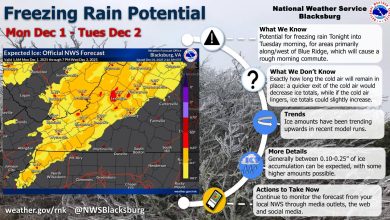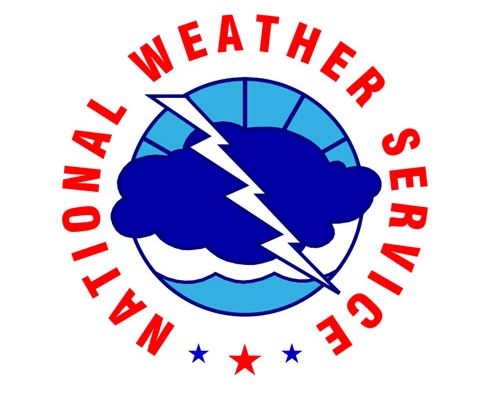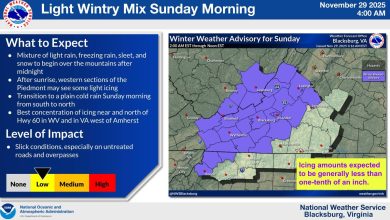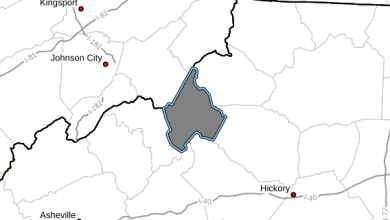Last Updated on February 12, 2022 6:38 pm
RALEIGH – The N.C. Department of Transportation has started to assess some Hurricane Florence-affected roads, as well as railway, aviation, ferry and DMV assets, areas in the southeastern part of the state remain under water, including sections of Interstates 40 and 95.
Roadways
As of about 3 p.m. Wednesday, Sept. 19, about 800 sections of road were closed, with about 750 of those in the eastern half of the state. Most of the closures are due to flooding or road damage, while others are blocked by debris downed when Florence made landfall near Wrightsville Beach on Friday, Sept. 14.
In some areas, water has receded and NCDOT crews have been able to inspect roads and bridges to determine whether they are safe to open, or will need repairs and must remain closed. However, in many communities there is still a wait for water to drain away. And other roads may become flooded as rivers, such as the Neuse, reach flood stage later in the week. Because the status of many roads can change on short notice, the department continues to urge people to not drive into impacted areas of the state for their own safety.
NCDOT has deployed more than 100 of its employees from areas of North Carolina where the damage from Hurricane Florence was not as severe into the state’s hardest hit communities. Road crews in the northeastern part of North Carolina loaded up backhoes and dump trucks to help fix roads in the New Bern area. Teams from Raleigh were dispatched from the southern Triangle counties to the South Carolina border and the Wilmington area. And crews from the mountains made the trek to the coast to help their colleagues repair roads and replace culvert pipes destroyed by Florence. Additional personnel and equipment will be deployed as flood waters recede and needs are determined.
A number of main thoroughfares in southeastern North Carolina remain flooded or blocked by downed debris such as trees and power lines. They include:
- Greene County – N.C. 58 northbound at the Wilson County line.
- Jones County – N.C. 41, N.C. 58 in Trenton; and U.S. 17 in Pollocksville.
- Lenoir County – N.C. 11 southbound at Skinner’s Bypass in Kinston.
- Brunswick County – Sections of N.C. 130, N.C. 133, N.C. 211, N.C. 87, N.C. 904 and N.C. 906.
- Duplin County – Sections of I-40, N.C. 111, N.C. 24, N.C. 241, N.C. 403, N.C. 41, N.C. 50, N.C. 903, and U.S. 117.
- New Hanover County – Sections of I-40, N.C. 132, N.C. 133, U.S. 117, U.S. 17, U.S. 421, U.S. 74 and U.S. 76.
- Pender County – sections of I-40, N.C. 133, N.C. 210, N.C. 50, N.C. 53, U.S. 117 and U.S. 421.
- Sampson County – Sections of N.C. 24, N.C. 242, N.C. 411, N.C. 903, U.S. 13, and U.S. 701.
- Onslow County – Section of U.S. 17 due to pavement washout.
A number of main roads in the northern coastal region are also impacted, including:
- Hyde County – N.C. 12 on Ocracoke Island remains closed from the Pony Pen north to the Ferry Dock due to protective dune loss and pavement damage; U.S. 264, N.C. 45 and N.C. 94 have sections of flooding, but remain open.
- Tyrrell County – U.S. 64 Business and N.C. 94 have areas of flooding but remain open.
- Pasquotank County – N.C. 344 has sections with flooding but remains open.
- Perquimans County – U.S. 17 Business and N.C. 37 experienced some flooding but remain open.
- Currituck County – N.C. 168 and N.C. 615 have areas of flooding but remain open.
Main roads impacted in central North Carolina, including closures from flooding, downed trees and powerlines include:
- Wayne County – N.C. 55 closed between Seven Springs and Mount Olive due to washouts; U.S.13 west of Overman Road is closed due to flooding; I-795 northbound lanes closed south of the Goldsboro Bypass due to slope failure; and N.C. 111 southbound closed from Neuse River flooding.
- Wilson County – N.C. 222 closed due to flooding south of Stantonsburg, and U.S. 58 is closed north of Bartie Road near Stantonsburg.
- Bladen County – U.S. 701, N.C. 41, N.C. 53, N.C. 210, N.C. 211 and N.C. 211 Business closed in sections.
- Columbus County – U.S. 74, U.S. 74 Business, U.S. 76, U.S. 701 Business, N.C. 87, N.C. 130, N.C. 211, N.C. 904, and N.C. 905 closed in places.
- Cumberland County – I-95, U.S. 13, U.S. 301, N.C. 24, N.C. 59, N.C. 87, N.C. 210 and N.C. 690.
- Harnett County – I-95, U.S. 401, N.C. 27, N.C. 82, and N.C. 217 closed in sections.
- Robeson County – I-74, I-95, U.S. 74, U.S. 301, U.S. 501, N.C. 41, N.C. 71, N.C. 72, N.C. 83, N.C.130, N.C. 211 and N.C. 904 are closed in sections.
- Chatham County – U.S. 15/501 from Pittsboro to U.S. 1 in Lee County closed due to overtopping of Deep River; U.S. 421 closed due to flooding from the Deep River.
- Lee County – U.S. 421 closed due to the cresting of the Deep River.
- Moore County – Portions of N.C. 22 and N.C. 690 are impassable due to flooding.
- Scotland County – U.S. 401 is impassable in multiple locations throughout the county; U.S. 401 Business in Laurinburg is closed; U.S. 501 is closed due to high water in three locations near the Robeson County line, as well as at the Hoke/Scotland County line due to partial roadway washout at Drowning Creek (headwaters of Lumber River); and U.S. 74 Business is closed in east Laurinburg due to flooding near the approach to a bridge.
Ferry services:
Ferry service for the public has resumed for several more coastal routes, and two state ferries arrived in Southport late Tuesday evening after traveling 14 hours down the Intracoastal Waterway carrying much-needed fuel, transportation workers and supplies to the Wilmington area.
The ferry service between Hatteras and Ocracoke Island is being used to shuttle essential emergency responders from Hyde County, NCDOT workers and transportation equipment to help clear N.C. 12. It was damaged and made impassable on the northern end of Ocracoke Island.
Rail services
NC by Train passenger service on the Carolinian, and Piedmont have resumed full service between Raleigh and Charlotte.
Amtrak passenger train service traveling in and through North Carolina will resume service on Thursday more than a week after service had been interrupted due to Hurricane Florence and track improvements.
Public transportation services
The NCDOT Public Transportation Division, in coordination with Federal Transportation Administration and Federal Emergency Management Agency, has been awarded $300,000 for post evacuation services.
Units are also continuing to evacuate affected areas, with transit systems assisting counties in need, including evacuating affected residents to shelters throughout the state and loaning several buses to the National Guard for emergency response activation.
DMV services
Most N.C. Division of Motor Vehicles driver license and license plate agency offices in central and eastern North Carolina remain closed on Wednesday due to flooding and power outages following Hurricane Florence.
Some NCDMV offices could be closed for several days, depending on the conditions in areas most affected by Florence.
NCDMV’s main call center, located in Bladen County, reopened Wednesday with limited staff. Customers may experience longer wait times when calling the Customer Service Center.
Once regular services resume, drivers who have appointments at the affected driver license offices will be contacted to reschedule their appointments.
Other storm-related details and resources:
The statewide information line can provide callers with nearby shelter, housing and other storm-related details. Dial 2-1-1 or 888-892-1162, or text Florence to 898211. The information line is staffed around the clock to connect North Carolinians to storm resources.
The North Carolina Disaster Relief Fund is also available for donations to support North Carolina’s response to Hurricane Florence. To donate, visit governor.nc.gov or text FLORENCE to 20222.
For more information, download the Ready NC app, visit ncdps.gov/florence or follow NC Emergency Management on Facebook and Twitter.


















